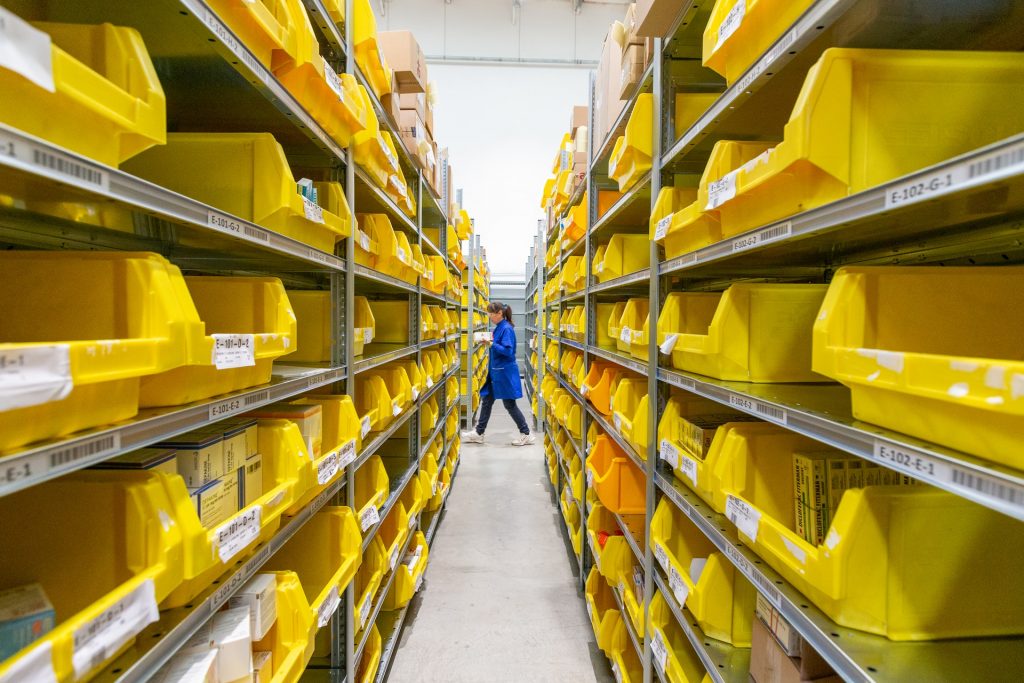Cloud-Based ERP Solutions: A Comprehensive Guide
Discover the power of cloud-based ERP solutions and how they streamline operations, boost efficiency, and drive growth for businesses. Learn more now!


Discover the benefits of AccelGrid

Convert more leads into revenue

Manage orders at scale

Streamline billing and get paid on time

Rock-solid inventory control

Optimize your supply chain

Switch to lean manufacturing

Sell anywhere, anytime with mobile POS

Simplify accounting and grow your business

Sell more with integrated eCommerce

AI-powered demand forecasting
Convert more leads into revenue
Manage orders at scale
Rock-solid inventory control
Streamline billing and get paid on time
Optimize your supply chain
Achieve lean manufacturing
Sell more with integrated eCommerce
Sell anywhere, anytime with mobile POS
AI-powered demand forecasting
Simplify accounting and grow your business

Inventory turnover is the rate at which a business replenishes its stock during a given period due to sales. The inventory turnover ratio is a good indicator of the effectiveness of your sales strategy and how well you can generate sales.
Businesses often have a significant amount of money tied up in their inventory. Having your warehouse over-stocked with slow-moving items ties up cash that would take a long time to recover through sales. It also impacts your warehouse efficiency because every item occupies valuable space and needs resources to manage them. Knowing your inventory turnover helps you make better pricing, marketing, manufacturing, and purchasing decisions.
COGS is a measure of a company’s direct production and/or purchase costs of goods and services. You can determine your COGS using the formula:
You can pull up your annual income statement to see your COGS or use our Free COGS Calculator
The next step is to calculate the average inventory value for the same period. Calculate the average inventory for the same period using the formula:
We can now calculate the inventory turnover ratio using the formula:
To give the inventory turnover ratio some daily context, we go one step further to determine the Days Sales Inventory (DSI) or days inventory. The DSI measures how many days it takes for inventory to turn into sales. A lower day sales value is ideal in most cases since it means that stock is cycled in fewer days. However, DSI values can vary between industries.
For the fiscal year 2019, ABC Corp reported a year-end inventory of $20 million, a beginning inventory of $19 million, and an annual COGS of $50 million.
ABC Corp’s inventory turnover ratio:
$50 million ÷ ($20 million + $19 million)/2 = 2.56
ABC Corp’s days inventory:
(1 ÷ 2.56) x 365 = 142 days
This indicates that ABC Corp sells its entire inventory within a 142-day period.
Great! You’ve now determined your inventory turnover ratio. But what does it really mean for your business?
Therefore, inventory turnover reflects the effectiveness of your sales strategies and how well your purchase department can adapt inventory purchases based on demand trends.
A good inventory turnover ratio is between 5 and 10 for most industries. In other words, you would be selling and restocking products every 1-2 months. It’s critical to maintain a good balance between having enough inventory to meet demand and not having to replenish frequently.
Fortunately, there are a number of ways to improve your inventory turnover ratio. These include:
Discover the power of cloud-based ERP solutions and how they streamline operations, boost efficiency, and drive growth for businesses. Learn more now!
Take your business operations to the next level and boost customer satisfaction by mastering order management for multi-channel selling.
AI may be a relatively new technology, but it’s never too early to use AI for eCommerce businesses to begin realizing its benefits.